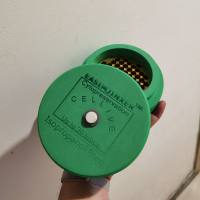A Modified Inverse PCR Procedure for Insertion, Deletion, or Replacement of a DNA Fragment in a Target Sequence and Its Application in the Ligand Inte
互联网
互联网
相关产品推荐

insE1/insE1蛋白Recombinant Escherichia coli Transposase insE for insertion sequence IS3A (insE1)重组蛋白insE1; b0298; JW5036; Transposase InsE for insertion sequence IS3A蛋白
¥3000

EASIMJINXER CryoKing 30-Well Cryoboxes, -1℃(-33.8℉) Cell Freezing Container, EVA Freezer Boxes, Laboratory Procedure Cooling Box for 1.2ml or 2.0ml Vials, 1 Pcs Freezing Containers
¥598

Biolife Green I, 10,000× in DMSO(PCR级)
¥1840

Coronavirus spike重组蛋白|Recombinant SARS-CoV-2 Spike S1(HV69-70 deletion,N501Y,D614G)-His Protein
¥4500

PYCARD/PYCARD蛋白Recombinant Human Apoptosis-associated speck-like protein containing a CARD (PYCARD)重组蛋白hASC;Caspase recruitment domain-containing protein 5;PYD and CARD domain-containing protein;Target of methylation-induced silencing 1蛋白
¥1836
相关问答

